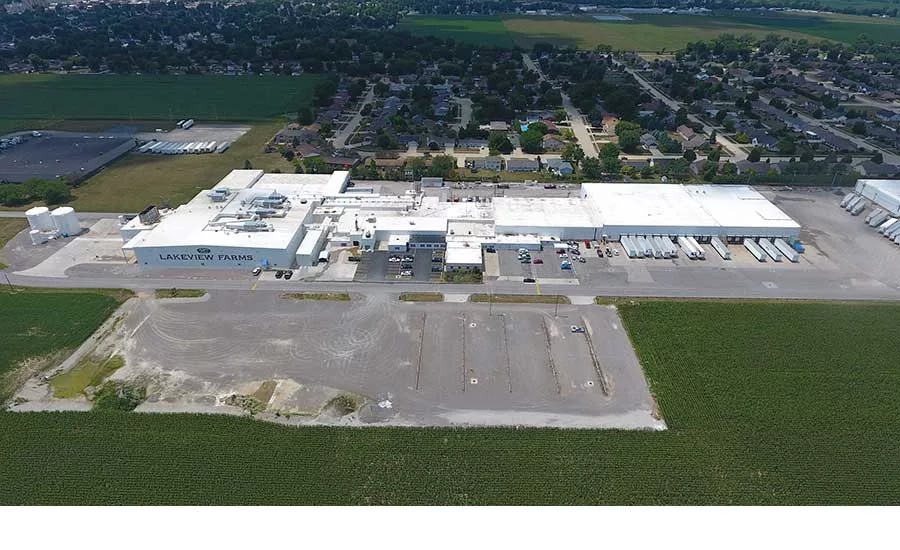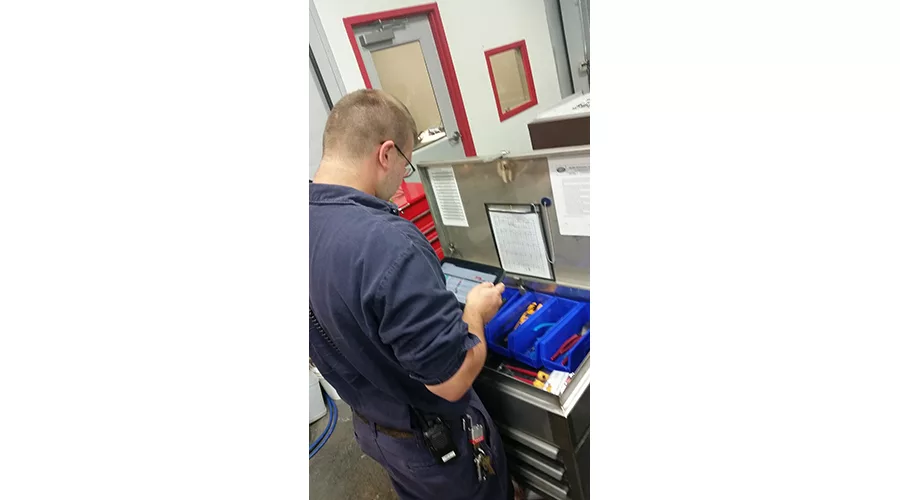Field Reports
Preventive maintenance helps Lakeview Farms cut costs
Lakeview Farms implements a software system to boost efficiency and reduce downtime.

Lakeview Farms in Delphos, Ohio. Source: Lakeview Farms.

A Lakeview Farms employee checks the Leading2Lean CloudDISPATCH system, which Lakeview uses to schedule maintenance, track preventative maintenance and manage spare parts. Source: Lakeview Farms.
Established in 1988, Lakeview Farms produces a number of desserts and specialty food items targeting the Hispanic demographic, specifically with its Luisa’s and Señor Rico brands.
The company underwent a transition in 2013 that combined three separate plants into one large food production facility in Delphos, Ohio. The three plants each produced different types of foods—one produced desserts; another produced dips; and the third plant focused on specialty products like crab salads, seafood dips, grits and sour cream products.
During the plant transition, several inefficiencies began to surface, as well as transition-related confusion. Parts, machines, locations and historical information were all scrambled in the move. Other pivotal concerns surfaced, including repair costs, excessive overtime, hand-written maintenance work orders and an unknown spare parts inventory. Each individual team still operated independently in the new plant with separate management and systems.
Ultimately, four prioritized concerns were clearly identified, all centered around maintenance:
- Preventative maintenance (PM) scheduling
- Tracking machine uptime
- Technician efficiency
- Spare parts control.
Preventive maintenance was rare and usually only performed when critical failures were seen. Recorded on three-copy work orders and in manila folders, these maintenance records were filed in a cabinet, never to be used again. Maintenance decisions were often based on which production manager was most vocal about needed repairs.
“Our daily maintenance huddles used to be a pot of coffee and ‘What did you do last shift?’” says Todd Parker, plant engineer for Lakeview Farms. “There was some direction, but not a whole lot more. There was discussion with really no data, and it was based on the most recent occurrence, no data-driven improvements.”
Consolidating three large plants into one location meant consolidating the machinery and parts of all three locations as well. But because the maintenance departments of all three facilities were operating on a reactive maintenance and repair schedule, the spare parts inventory was beyond extensive. It became necessary to have every possible replacement part on hand in the event of a breakdown. This resulted in a total of $1.7 million in unknown spare parts inventory.
When all those spare parts were compiled, it was discovered that many of them were not needed, and some were even obsolete.
“I had parts for equipment that hadn’t been seen for 10 years,” Parker says.
To address these needs, Lakeview Farms implemented Leading2Lean’s CloudDISPATCH software system to provide real-time information on its plant maintenance operations. Through visibility for schedulers and technicians, reactive repairs were replaced with preventative maintenance plans. The CloudDISPATCH system also allowed technicians to directly link the history of failures to the preventative maintenance history, resulting in a process that could be reviewed and improved, and allowed the tracking of technician labor usage on those preventative activities.
The new system is now being used as a multi-tooled system for PM. When a machine is scheduled for PM, that time window is set whether or not maintenance is needed. If there is no need for maintenance, that time can be used for calibration or recording other vital data that is then documented in the system.
By cataloging parts in Leading2Lean’s system, each part is traceable, labeled and shelved. Obsolete parts have been clearly identified and are being prepped for liquidation.
After implementing Leading2Lean’s CloudDISPATCH system, Lakeview Farms saw a downtime decrease of 34 percent in the first six months, a 15 percent reduction in overall repair costs and maintenance technician efficiency that has improved by 30 percent. Overtime, which was once at 30 percent, has been reduced to 12.7 percent. And the plant continues to improve.
Now that all the Lakeview Farms machines are in the system, they can be tracked by two distinct factors: clock time and number of occurrences. If one of the machines isn’t running at full efficiency, the problem can be quickly identified based on real-time data.
“With one touch of my phone, I can see what’s going on at the plant, even when I’m out of town on a business trip,” Parker says. “From the top level down, you can make decisions from anywhere you are connected to the internet in real time. That is invaluable.”
For more information:
Leading2Lean, 877-225-5201, www.leading2lean.com.
Looking for a reprint of this article?
From high-res PDFs to custom plaques, order your copy today!





